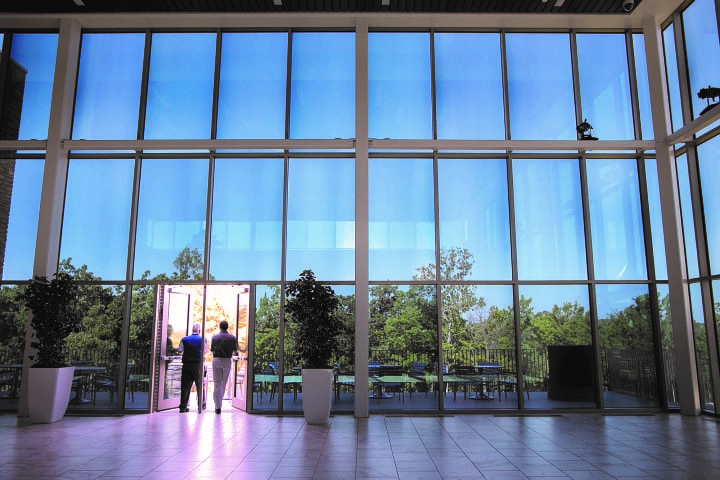
While reflective window film isn’t typically thought of as glamorous, these products perform an impressive array of functions. Security, aesthetics, privacy, safety in the event of shattering glass – all are job’s that window films do well.
It’s in controlling the effects of the sun’s energy, though, that is how reflective window film gets the work gets done. Heat and light from the sun benefit humankind tremendously, of course – and at the same time cause damage to skin and property, and require consumption of energy to manage, mainly in the form of electric kilowatts for cooling.
How does window film control the effects of heat on the interior of a building or automobile? Through reflection, absorption, or a combination of both. The sun’s rays are composed of three types of energy: visible light, and infrared and ultraviolet energy that we can’t see, but can only feel.
Depending on its construction, window film allows most or all visible light to pass through the glass to which it’s applied, while reflecting and/or absorbing most of the heat energy from the sun before it’s felt inside the building or car. Reflective window films bounce much of the sun’s infrared (IR) rays back into the atmosphere, while non-reflective or dyed films simply absorb or block the IR rays.
Controlling the amount of heat that passes through glass by installing window film slows fading of furnishings and carpet, and significantly reduces cooling costs. An experienced, reputable, reflective window film professional will help you determine which window film product is right for your home, building, or automobile.
SFF’s reflective window film help reduce the solar heat gain from the sun, resulting in improved indoor climate control and comfort, helping lower energy consumption by reducing the need for air conditioning and cooling systems. Our reflective window film will also stop 99% of the UV light, protecting artwork, fabrics and furnishings from the effects of fading.


